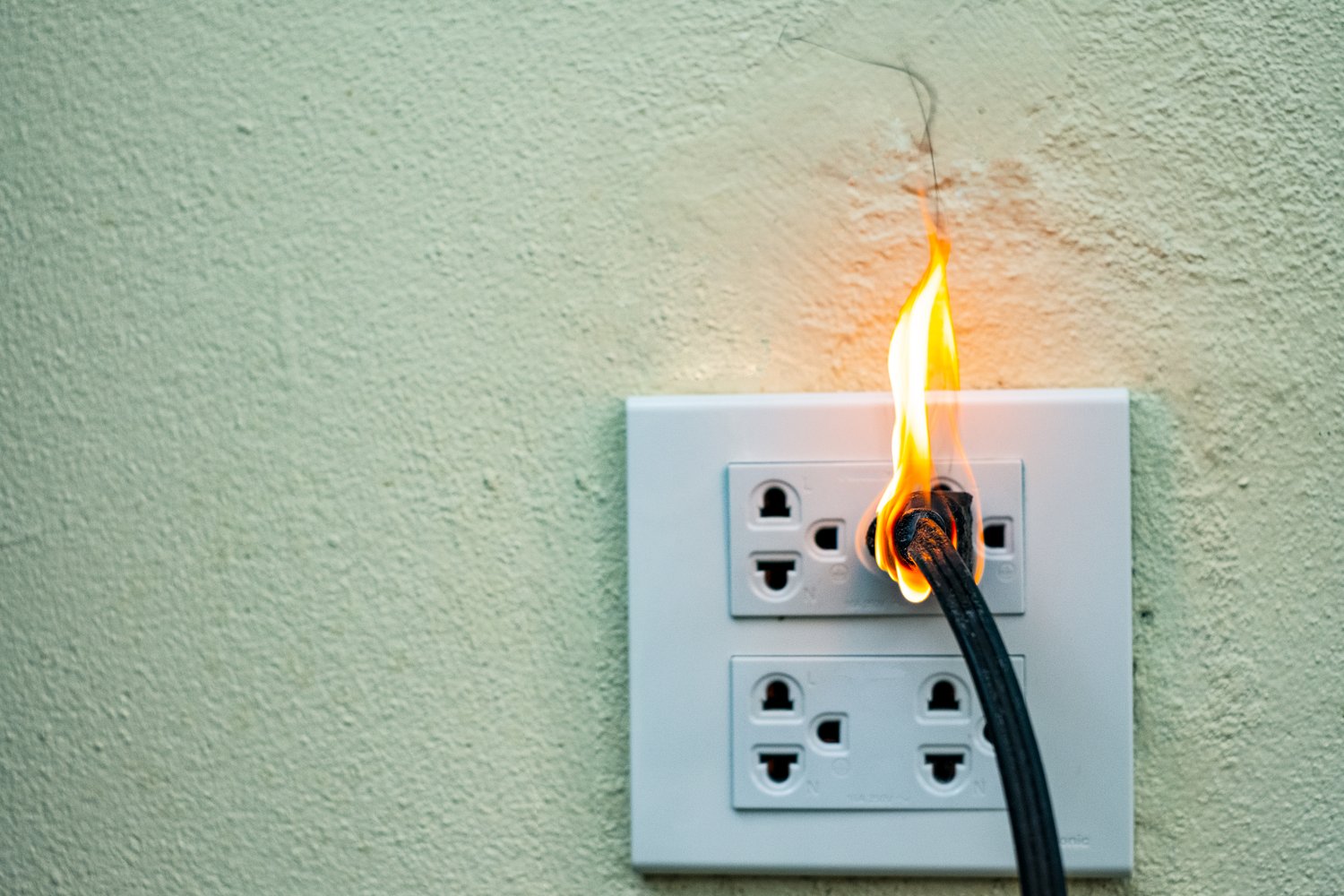Stumbling upon an unresponsive electrical outlet can quickly disrupt your daily routine and raise safety concerns in your home. Before you rush to call an electrician, consider the common culprits behind this issue and what you can do to remedy the situation yourself. This exploration into electrical outlets not only empowers you to tackle minor problems on your own but also emphasizes the importance of a well-maintained electrical system.
- Identifying Causes: Circuit overloads, tripped breakers, and faulty wiring are typical issues affecting your outlets, and knowing these can guide prompt action.
- Testing Procedures: Learn to use a multimeter or plug-in tester for accurate diagnosis of outlet issues.
- Resetting Outlets: Discover the correct steps to reset GFCI outlets and address common reset failures.
- When to Call a Professional: Recognize the signs that indicate the need for professional electrical assistance to ensure safety.
- Preventative Maintenance: Regular maintenance tips are essential to keep your outlets functioning optimally and prevent future issues.
Dive into this guide to equip yourself with practical solutions and insights for managing your home’s electrical outlets. Share your experiences and insights to support others navigating similar challenges, fostering a community of informed and safety-conscious homeowners.
Identifying Causes: Why Is My Electrical Outlet Not Working?
Electrical outlets can suddenly stop working, which can be both inconvenient and concerning. Understanding the typical issues that cause outlet failure is the first step in efficient troubleshooting. A common culprit is circuit overload. This occurs when too many devices are plugged into a single circuit, drawing more electricity than it can handle. Overloaded circuits can lead to tripped breakers, disrupting your electrical supply.
Another frequent issue involves the circuit breaker. If your breaker has tripped, it disconnects power to prevent overheating and potential fires. Identifying tripped breakers is crucial, as they may indicate other underlying problems such as an overload or short circuit.
Faulty wiring is another major cause of non-functional outlets. Over time, wires can become loose, damaged, or corroded, leading to intermittent power issues. This can be particularly risky, as it might also raise the potential for electrical shocks or fires.
Addressing these issues promptly is vital not only for restoring power but also for maintaining a safe electrical system. Regular inspections and understanding these common causes can prevent more serious electrical problems in the future.
Testing Your Outlet: Step-by-Step Procedures
Once you’ve identified potential causes, it’s time to test your electrical outlet to diagnose the problem accurately. Begin by using a multimeter, a handy tool that measures electrical voltage and continuity. Ensure the multimeter is set to the AC voltage setting, and insert the probes into the slots of the outlet. A reading of around 120 volts indicates the outlet is functioning correctly. If no reading appears, this could signify an issue.
Another simple and effective method involves a plug-in tester, particularly useful for those unfamiliar with multimeters. These testers have built-in lights that indicate the condition of the outlet. Simply plug the tester in, and refer to the included legend to interpret the light signals. This will help you diagnose issues like open grounds, open neutrals, or reversed wires swiftly.
Through these testing methods, you can systematically eliminate potential problems, making it easier to pinpoint the exact issue with your electrical outlet. Knowing these techniques equips you with the tools to handle minor electrical problems with confidence before considering professional help.
How to Reset an Electrical Outlet: Testing and Reset Guide
Resetting a Ground Fault Circuit Interrupter (GFCI) outlet is essential when dealing with outlets that have unintentionally tripped due to a surge or fault. GFCI outlets, commonly found in kitchens, bathrooms, and outdoor areas, play a crucial role in preventing electrical shock by halting power when an imbalance in the flow of electricity is detected.
To reset a GFCI outlet, start by locating the outlet, identified by its “Test” and “Reset” buttons. Ensure the area around the outlet is dry and safe to interact with. Press the “Reset” button firmly until you hear a click, indicating the outlet has been reset. If the outlet still doesn’t work, check for a tripped circuit breaker or an additional GFCI on the same circuit that may need resetting.
If resetting efforts do not restore power, consider testing the outlet with a multimeter. This device will confirm whether power is properly reaching the outlet. Additionally, using a plug-in tester can help identify issues beyond the outlet itself, hinting at potentially faulty wiring.
Throughout this process, prioritize safety. Avoid resetting while standing on wet surfaces or handling conductive materials. If a GFCI outlet repeatedly trips or refuses to reset, it often signifies an underlying issue needing professional assessment to prevent electrical hazards.
Professional Help: When to Call an Electrician
Identifying the appropriate time to call an electrician can make a significant difference in maintaining electrical safety and efficiency in your home. While basic troubleshooting can address minor issues, complex electrical problems require professional intervention.
Contact a certified electrician if you experience persistent tripping of circuit breakers after a reset, frequent power outages in specific areas of your home, or visible signs of damage, such as burn marks or frayed wiring. These situations suggest deeper faults that could lead to serious hazards, including electrical fires or appliance damage.
Electrical standards and codes are constantly updated to enhance safety. A licensed electrician stays informed about these changes and ensures your home complies with current regulations, offering peace of mind and safeguarding against future failures.
In any situation involving sparks, unusual noises from outlets, or a lingering burning smell, cease all interaction immediately and contact a professional. These signs indicate significant risk levels, necessitating expert assessment and repair. Prioritizing professional help not only preserves the integrity of your electrical system but also ensures long-term safety for your household.
Preventative Maintenance: Keeping Your Outlets Working
Regular preventative maintenance is essential in ensuring that your electric outlets work efficiently and contribute to the longevity of your home’s electrical system. Proper maintenance not only prevents unexpected failures but also enhances safety and energy efficiency.
One effective way to start with preventative maintenance is by routinely inspecting your electrical outlets. Check for visible signs of damage or overheating, such as discoloration or scorch marks. These can be indicators of underlying issues that need immediate attention. Keeping your outlets clean and dust-free is another simple yet crucial step. Periodically vacuuming around the outlets and gently wiping them with a dry cloth can help prevent dust accumulation, which may lead to overheating or connection issues.
For optimal performance, it’s also wise to test the outlets using a plug-in tester or a multimeter. This allows you to verify that they are correctly wired and able to carry the intended load. In areas prone to moisture, such as kitchens and bathrooms, ensure that Ground Fault Circuit Interrupter (GFCI) outlets are functioning correctly, providing essential protection against electrical shorts and shocks.
Another important tip is to avoid overloading outlets. Plugging in too many devices can strain the outlet and the circuit, increasing the risk of tripped breakers or electrical fires. Use power strips with built-in overload protection to distribute electrical loads more evenly.
Lastly, regularly updating and replacing older outlets with newer, energy-efficient models can greatly enhance the safety and efficiency of your home’s electrical systems. Outdated or worn-out outlets should be replaced promptly to prevent electrical mishaps.
By implementing these maintenance practices, you can ensure that your electrical outlets remain in peak condition, providing reliable power distribution and maintaining the safety of your home. Have you encountered any electrical outlet challenges that regular maintenance has helped resolve? Share your insights and tips with the community to help others achieve the same level of electrical system upkeep.
Frequently Asked Questions About Electrical Outlets
Why might an electrical outlet stop working?
An outlet may stop working due to circuit overloads, tripped breakers, or faulty wiring. These issues should be addressed promptly to ensure safety.
How can I test if an outlet is working properly?
You can test an outlet using a multimeter or a plug-in tester for accurate diagnosis of electrical issues.
What should I do if my GFCI outlet won’t reset?
If your GFCI outlet won’t reset, check for a tripped breaker or a potential faulty circuit. If these aren’t the issues, consult an electrician.
When is it necessary to call an electrician?
Call an electrician if you encounter continuous outlet failures, burning smells, or sizzling sounds, as these could indicate serious electrical hazards.
How can I maintain my electrical outlets to prevent issues?
Perform regular maintenance by ensuring outlets aren’t overloaded, inspecting for damage, and using outlets within their rated capacity.





